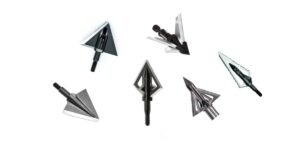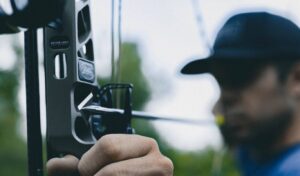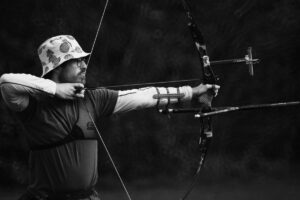Almost every archer has experienced days in which it feels as if they cannot hold their bow on target, no matter what. Try as we might, our bow arm seems to shake and wader, causing endless frustration and eventual exhaustion. For many, this condition can prove downright maddening.
So how is it that one can correct this instability and reclaim their accuracy? In truth, the answer to this question is multi-faceted and largely dependent upon the initial source of the underlying issue itself.
Luckily, in every case, there is an applicable solution that will provide welcomed relief.
Contents (Jump to Topic)
ToggleSo, how do you keep your bow arm steady? The following are several of the most common causes of bow arm movement and tips on how to remedy each case.
Too Much Poundage
In many instances, a lack of bow arm stability is caused by an archer’s insistence upon shooting too high of draw weight. This, of course, is extremely counterproductive. As an archer attempts to hold at full draw, their bow arm begins to shake, struggling to keep their bow within the valley.
This is an issue that can also destroy an archer’s form with time if not corrected.
Solution: The only worthwhile solution to this issue involves dialing back a bow’s draw weight to a poundage that can be easily maintained at full draw. Remember, even in a hunting scenario, an excessive draw weight is not required for a clean kill.
Too Long Of Draw Length
Another common cause of bow arm instability is a draw length that exceeds practicality for a particular archer. Ideally, you should place a slight amount of outward pressure upon a bow’s riser just prior to your release in order to stabilize the shot.
However, if you are already considerably overextended due to excessive draw length, you will be unable to exert any additional outward force of this type.
Solution: In order to correct this issue, an archer’s draw length must be measured by a qualified individual, and the bow itself must be set to reflect these measurements. This often causes the above-mentioned issue instantaneously.
Force Aiming
Under ideal circumstances, an archer should never find themselves tensing their bow arm in an attempt to “push” a bow’s sight-pin on target.
This tensing of an individual’s bow arm tends to cause a degree of shaking, which only increases in intensity with each passing second. In turn, an archer is likely to find it impossible to aim satisfactorily when attempting to line up a shot in this manner.
Solution: Upon coming to full draw, you should relax, allowing your body to fall into proper form. Rather than forcing a bow’s sight pins in the desired direction, these pins should appear to slowly float over the face of your target, eliminating any need to apply excessive force.
Failure To Anchor Consistently
Often overlooked is an archer’s anchor point. The term anchor point refers to the manner in which the hand of your release arm settles along the side of your face when at full draw.
No matter where this point might be, an archer’s anchor point should always be consistent from one shot to the next. This prevents variations in effective draw length and promotes increased bow arm stability.
Solution: Choose a point of anchor that works for you when shooting your bow, and do not deviate from its use under any circumstances. Practice shooting regularly until reaching this point of anchor has been committed to muscle memory.
Conclusion
It is important to address any issues with excessive bow arm movement before they develop into target panic.
If left unchecked, this can lead to a great deal of frustration and decreased accuracy when shooting your bow. The tips outlined in this article should help you get started on the road to eliminating such problems.







